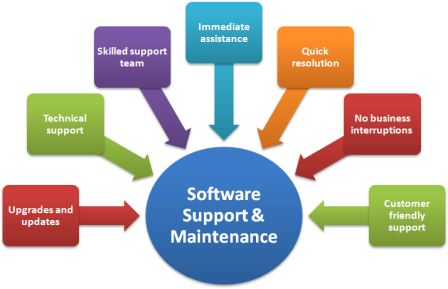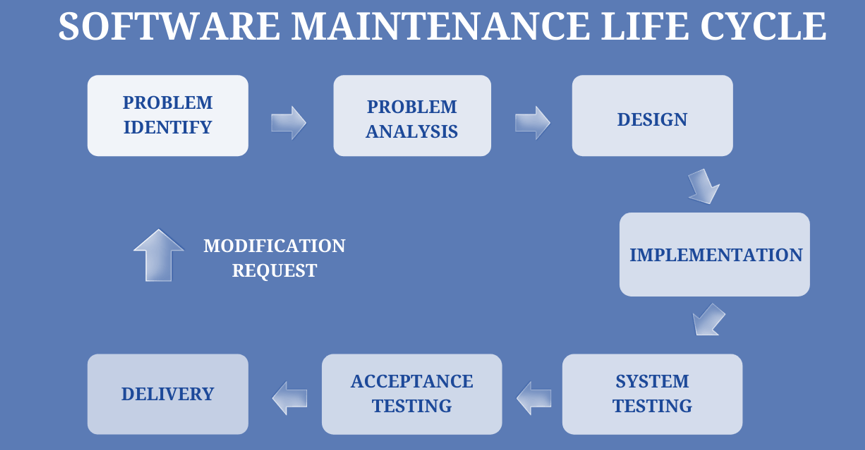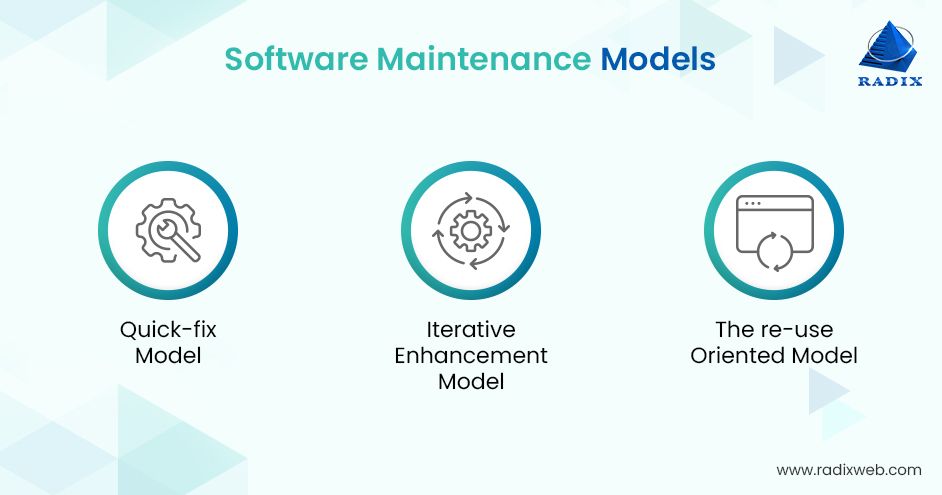SOFTWARE MAINTENANCE AND SUPPORT
INTRODUCTION
In today’s dynamic software landscape, maintenance and support are essential pillars ensuring the seamless functioning and reliability of software products. These phases extend beyond mere bug fixes to encompass activities such as feature enhancements, security updates, and performance optimization. By prioritizing effective maintenance practices, businesses guarantee customer satisfaction, minimize downtime, and ensure the longevity and quality of their software solutions. Moreover, maintenance and support are critical investments in the digital era, where software underpins business operations and customer interactions, requiring a proactive approach to address evolving user needs, technological advancements, and security threats.
This blog post delves into the significance of software maintenance, highlighting effective techniques and strategies to optimize maintenance processes. Additionally, it explores emerging trends and technologies reshaping the future of software maintenance. By understanding the importance and best practices of maintenance, businesses can maximize the value of their software investments, drive innovation, efficiency, and customer loyalty, ultimately securing long-term success in the ever-evolving digital landscape.

IMPORTANCE OF SOFTWARE MAINTENANCE
Software maintenance is of paramount importance as it ensures that software remains aligned with user requirements and expectations over time. As users interact with software, new issues and bugs may arise, necessitating prompt resolution to uphold user satisfaction. Regular maintenance activities enable the identification and correction of these issues, ensuring the software continues to operate as intended and meets evolving user needs. Additionally, software maintenance is essential for adapting to the ever-changing landscape of technologies and platforms. With advancements occurring continuously, software must be updated to remain compatible with new operating systems, devices, and software versions. Maintenance facilitates these updates, ensuring the software remains accessible and usable across diverse environments, thereby preserving its relevance and utility.
Moreover, software maintenance plays a critical role in enhancing performance, security, and reliability. Through regular maintenance practices, areas for performance improvement can be identified and addressed, such as optimizing code or enhancing resource utilization. Furthermore, maintenance involves implementing security patches and updates to safeguard against vulnerabilities and threats, thereby bolstering the software’s resilience and trustworthiness for users.
In essence, software maintenance is indispensable for ensuring the sustained functionality, reliability, and evolution of software products. By prioritizing maintenance efforts, businesses can effectively address user needs, adapt to technological advancements, and fortify their software against potential risks, ultimately fostering long-term user satisfaction and organizational success.

EFFECTIVE SOFTWARE MAINTENANCE TECHNIQUES
Effective software maintenance techniques are crucial for ensuring the continued success and longevity of software solutions. One such technique is the adoption of continuous integration and continuous delivery (CI/CD) pipelines, which automate the software development process, enabling frequent code updates, testing, and deployment. This approach reduces the risk of errors and improves software quality. Additionally, containerization, virtualization, and microservices play a vital role by simplifying deployment, enhancing scalability, and decomposing software into smaller, independent services, thereby improving flexibility and maintainability.
DevOps practices are integral to effective software maintenance, fostering collaboration between development and operations teams and ensuring efficient software delivery and maintenance. Leveraging monitoring and logging tools enables businesses to proactively identify and address issues, minimizing downtime and maximizing uptime. Furthermore, prioritizing technical debt management is essential to maintain a high-quality codebase and prevent future complications. By implementing these techniques and practices, businesses can ensure the continuous functioning, reliability, and evolution of their software products.

SOFTWARE MAINTENANCE STRATEGIES
1. Agile development methodologies: Agile methodologies, such as Scrum and Kanban, promote iterative development, continuous testing, and customer feedback. By embracing agile practices, organizations can respond promptly to changing requirements, enhance software quality, and reduce maintenance efforts.
2. Automation tools: Automation streamlines software maintenance tasks by automating various activities like testing, deployment, configuration management, and documentation generation. By leveraging automation tools, organizations can eliminate repetitive tasks, saving time and resources for more strategic maintenance activities.
3. DevOps practices: DevOps fosters collaboration between development and operations teams, enabling faster software delivery, improved collaboration, and continuous monitoring. By breaking down silos between these teams, DevOps practices can significantly reduce maintenance efforts and enhance software reliability.
4. Proactive maintenance: Proactive maintenance involves identifying and addressing potential issues before they cause disruptions. Regular code reviews, performance testing, and vulnerability assessments are essential components of proactive maintenance. By taking a proactive approach, organizations can minimize the risk of software failures and reduce maintenance costs.
5. Clear maintenance procedures: Establishing clear maintenance procedures is crucial for efficient software maintenance. These procedures should outline team roles, processes for handling maintenance requests, and documentation standards. Clear procedures ensure consistency, accountability, and efficient problem resolution.

CONCLUSION
In the realm of software development, software maintenance and support are indispensable for ensuring the sustained success and evolution of software products. By prioritizing these processes, businesses unlock the full potential of their software investments, fostering customer satisfaction and securing a competitive advantage. Effective software maintenance encompasses a spectrum of best practices and innovative technologies, from continuous integration and DevOps to proactive strategies and emerging AI-driven predictive maintenance.
To achieve efficient software maintenance, organizations must embrace agile methodologies and automation tools, fostering collaboration and streamlining development processes. Proactive maintenance strategies, combined with clear procedures, ensure consistency and accountability throughout the maintenance lifecycle. Furthermore, emerging trends such as AI, DevOps, containerization, and cloud-native applications are reshaping maintenance practices, enhancing scalability, reliability, and resilience. By embracing these advancements, businesses can deliver high-quality software products that meet evolving market demands and drive long-term success.
